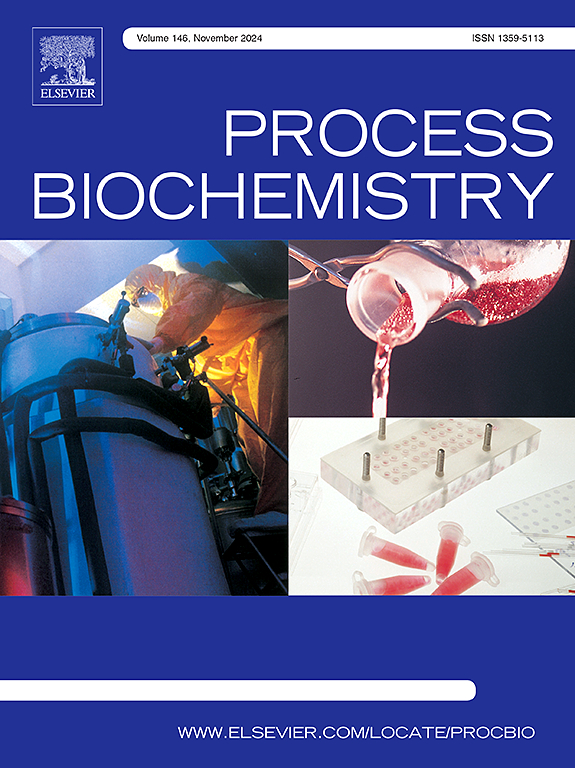褐环Stropharia rugosoannulata胞外多糖深层培养基的统计优化及动力学建模
IF 4
3区 生物学
Q2 BIOCHEMISTRY & MOLECULAR BIOLOGY
引用次数: 0
摘要
牛肉菇(Stropharia rugosoannulata)是全球公认的食用菌之一。然而,对发酵过程的了解仍然有限。本研究采用统计优化技术对体外多糖(SREP)深层发酵培养基进行优化。这些方法包括单因素实验、Plackett-Burman设计、最陡上升法和Box-Behnken设计。麦芽糖、pH和接种量是影响SREP产量的最显著因素。确定了优化的条件是:土豆150 g / L,麦芽糖 26.8 g / L,酵母膏1 g / L, KH2PO4 0.5 g / L, MgSO4 0.5 g / L,维生素C 0.02 g / L,温度28°C,转速150 r / min,培养液大小7 %,液体体积200 毫升,初始pH值9。与优化前条件相比,优化后的SREP产率由1.06 g/L提高到1.32 g/L。此外,建立了培养动力学模型,研究了发酵过程中菌丝细胞生长、SREP产量和底物消耗之间的关系。这些模型为利用液体深层发酵的方法生产水蛭胞外多糖提供了实践指导。本文章由计算机程序翻译,如有差异,请以英文原文为准。
Statistical optimization and kinetic modeling of submerged culture medium for exopolysaccharide production by Stropharia rugosoannulata
Stropharia rugosoannulata (S. rugosoannulata) is one of the most widely recognized edible mushrooms globally. However, knowledge of the fermentation process remains limited. In this study, a combination of statistical optimization techniques was employed to optimize the culture medium for exopolysaccharide (SREP) production during submerged fermentation. These methods included one-factor-at-a-time experiments, Plackett-Burman design, the steepest ascent method, and the Box-Behnken design. Maltose, pH and inoculum size were identified as the most significant factors affecting SREP production. The optimized conditions were determined to be: potato 150 g/L, maltose 26.8 g/L, yeast paste 1 g/L, KH2PO4 0.5 g/L, MgSO4 0.5 g/L, vitamin C 0.02 g/L, temperature 28°C, rotational speed 150 r/min, inoculum size 7 %, liquid volume 200 mL, and initial pH 9. Compared to pre-optimization conditions, the yield of SREP increased from 1.06 g/L to 1.32 g/L following optimization. Additionally, cultivation kinetic models were established to study the relationships between mycelial cell growth, SREP production and substrate consumption throughout the fermentation process. These models provided practical guidance for the production of exopolysaccharides from S. rugosoannulata through liquid submerged fermentation.
求助全文
通过发布文献求助,成功后即可免费获取论文全文。
去求助
来源期刊

Process Biochemistry
生物-工程:化工
CiteScore
8.30
自引率
4.50%
发文量
374
审稿时长
53 days
期刊介绍:
Process Biochemistry is an application-orientated research journal devoted to reporting advances with originality and novelty, in the science and technology of the processes involving bioactive molecules and living organisms. These processes concern the production of useful metabolites or materials, or the removal of toxic compounds using tools and methods of current biology and engineering. Its main areas of interest include novel bioprocesses and enabling technologies (such as nanobiotechnology, tissue engineering, directed evolution, metabolic engineering, systems biology, and synthetic biology) applicable in food (nutraceutical), healthcare (medical, pharmaceutical, cosmetic), energy (biofuels), environmental, and biorefinery industries and their underlying biological and engineering principles.
 求助内容:
求助内容: 应助结果提醒方式:
应助结果提醒方式:


